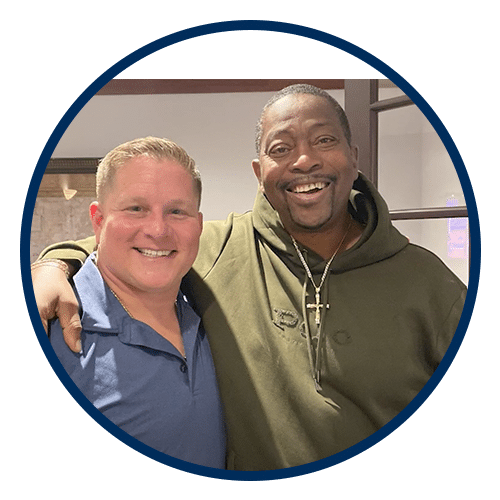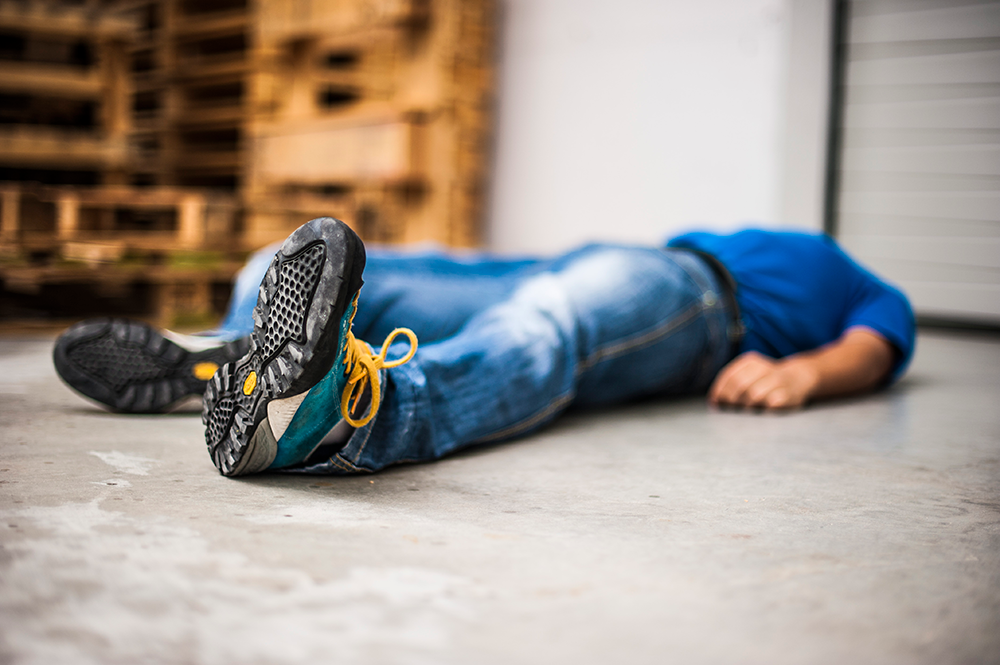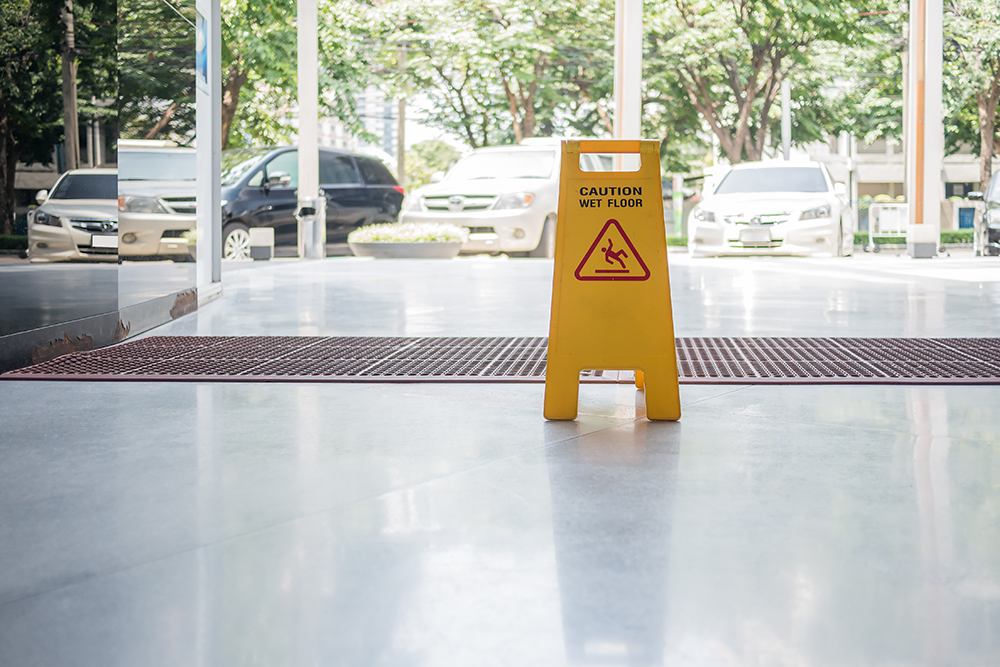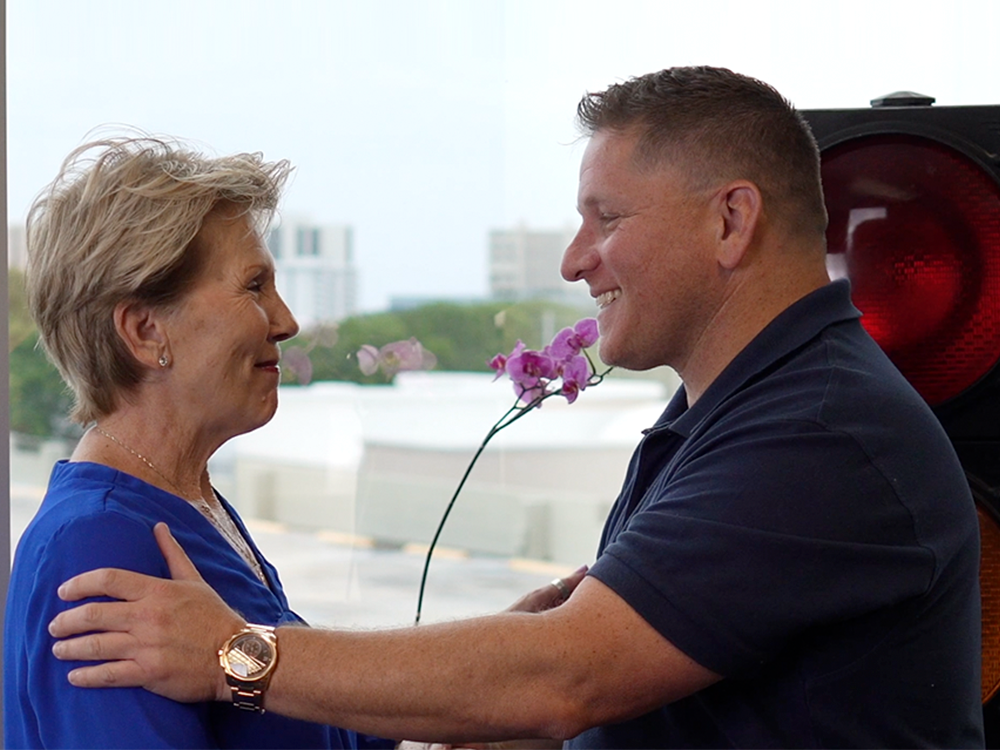Should I Hire A Slip and Fall Attorney?
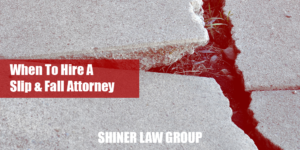
This is a question we hear often and unfortunately, sometimes accidents happen. No one means for them to, but someone is often responsible. Slip and fall accidents, in particular, are extremely common. OSHA has estimated that 15% of accidental deaths. Falls account for 8 million hospital visits a year and slip-falls represent 1 million of those. They are also the primary cause of lost days from work.
It’s easy to underestimate the seriousness of a fall until you realize that falls account for 5-11% of workplace fatalities, and the second leading cause of death for those over the age of 64. One in three elderly will experience a fall every year, and half of those adults who get hip fractures from the fall cannot live independently after the injury.
This is why businesses are held to such critical standards when it comes to slip and fall safety on their grounds and in their facilities. Protecting employese, customers, and guests from the risk of a fall is essential to prevent tragic accidents.
What is a Slip and Fall Injury?
A slip and fall injury is defined as an injury caused by a slip, trip, or loss of balance followed by a fall. Slip and falls are not directly caused by another person or party. Instead, the problem is that the facility or venue left a hazardous situation where someone could get hurt. An injury caused by a slip and fall is not something you should have to bear alone. The medical expenses, loss of work, and potential long-term effects of the fall should be compensated if a business or venue was responsible for keeping you safe while on their grounds.
If you or someone you know has recently suffered a slip and fall injury, the best thing you can do is hire an experienced slip and fall lawyer to file your case and win the damages compensation you need to pay for losses and expenses.
When to Hire a Slip and Fall Lawyer
We’d like to answer your initial question quickly, then go into depth on why this is the right answer. Our blog today is about when to hire a slip and fall lawyer. The answer is to start your lawyer conversation as soon as you are able. Slip and fall cases rely on evidence, clear recollection, and proving the liable party’s normal procedure is not adequate to eschew their duty of safety to employees, clients, and guests.
A slip and fall lawyer can help you navigate the next stages of filing your claim. A slip and fall lawyer will help you identify the liable party, file a case against them, and then navigate the courtroom and legal procedures on your behalf. They will negotiate for a fair settlement according to your injury and expenses, and your lawyer will help you form realistic expectations of the outcome.
Common Causes of Slip and Fall Injuries
- Wet Floor or Wet Conditions
- Icy Pavement
- Gap or Floor Transition
- Poor Lighting
- Steps and Level-Changes
- Uneven Walking Surface
- Metal Walkways
- Obstructions on the Floor
- Loose Railings
Slip and fall accidents can happen anywhere that the floor or ground is unusually unsafe to walk on. Slippery conditions, uneven conditions, irregular terrain, and ridges or gaps can all cause a person to unnecessarily stumble or lose their footing. Understanding the common causes of slip and fall injuries can help you to identify similarities in your own situation. Slip and fall injuries can be unique, but most share similar qualities with other slip or trip and fall accidents.
Wet floor or wet conditions can cause steps to be unusually slippery. Slipping can also be caused by ice or even by slick dry goods spilled on a smooth floor. Tripping may be caused by gaps and pits in the floor from poor maintenance or disconnected floor materials, while ridges and obstacles can cause tripping for the opposite reason. Steps, slopes, and any other level changes are an inherent risk, while metal walkways and loose railings are known hazards.
Common Injuries from Slip and Fall Accidents
- Back and Neck Injuries
- Head Injuries
- Hip and Pelvis Injuries
- Torn Ligaments and Tendons
- Deep Bruises
- Bone Fractures
The injuries common to slip and fall accidents are not as minor as most might think. Neck and back injuries can be extremely serious and happen frequently with fall injuries. Many people over 65 are prone to hip injuries when falling, and fractures account for 5% of all fall injuries that come to the emergency room.
How a Slip and Fall Lawyer Can Help
When you contact a slip and fall attorney, they will start you on the process of assessing your situation and building a case. First, your lawyer will help you identify the liable party. This is likely the business or venue where you got hurt, but sometimes there are secondary considerations like building ownership or parent companies to factor in.
From there, your slip and fall lawyer will help you calculate your medical expenses, past, present, and future along with any other damages like time lost from work or long-term disability. This will determine what the correct settlement amount to seek will be, based on the compensation you need and deserve after the accident.
Your lawyer will then pursue the case and argue on your behalf to prove that the liable party was at fault and should pay for your medical expenses and lost wages.
Who is Liable in a Slip and Fall Accident?
It is very important to determine the liable party for a slip and fall accident. Usually, this is easy to do. If you slip and fall in a grocery store parking lot, then the grocery store is at fault. If you trip over a cable at a theme park, the theme park is at fault. However, not every slip and fall case is clear-cut. You will need to determine the most-liable party if there are multiple parties involved.
For example, a business that rents its building may be liable for a slippery floor, but the building owner might be responsible for poorly kept grounds. You may also need to note the subtle difference between building ownership and building management services, which may transfer responsibility and liability.
Determining Liability for Slip and Fall
The next concern is whether the business, facility, or venue is truly viable. There are two primary responsibilities that contribute to slip and fall liability.
Duty of Care and Maintenance
The first is duty of care and maintenance. This requires venues to keep their accessible areas safe for people to traverse. The venue must maintain their facility so that disrepair does not cause hazards and maintenance steps like ice-salting must be taken to prevent known hazards.
- Poorly maintained floors
- Gaps, pits, or ridges in the floor
- Hazardous transitions
- Unmarked Spills
- Unsalted Ice
Duty to Provide Clear Cautionary Signage
The second is duty to provide signage around known hazards. For example, if someone steps past a waist-high yellow Wet Floor sign to slip on a wet floor, the venue clearly provided warning for the unsafe area. However, if the Wet Floor sign was ankle-height and near the wall, the walker would not have ample indication that the center of the floor might be slippery.
Signage not only has to exist, it has to be highly visible and efficiently placed to stop people from approaching the hazard. If a step is dangerous, it should be taped off or surrounded by cones or fold-out warnings. Small signs and signs mounted a distance from the hazard are not considered sufficient to eschew liability for an injury.
Negligence
The final factor is negligence, the act of willfully ignoring a hazard and allowing people to walk through that dangerous situation. Negligence can be determined if the venue was clearly aware (or should by all reason have been aware) and chose to take insufficient action. Scheduling an investigation without marking the hazard, for example, is a form of negligence by procrastination. Negligence might also be determined if it is clear that the venue caused the damage themselves and failed to remedy it to prevent future injuries.
What Compensation Can I Get with a Slip and Fall Injury?
There are two forms of compensation for a slip and fall injury; general compensatory damages and special compensatory damages. One accounts for your experience, the other accounts for your current and future financial losses due to the injury.
General Compensatory Damages
- Pain and Suffering
- Mental Anxiety
- Loss of Companionship
General compensatory damages are damages you claim based on how the injury has impacted your life. Most injury cases involve a Pain and Suffering compensation, and for severe cases you may also claim mental anxiety or loss of companionship as a result of the accident.
Special Compensatory Damages
- Medical Expenses
- Future Medical Expenses
- Lost Wages
- Disability – Lost Earning Capacity
- Legal Expenses
- Incidental & Travel Expenses
Special compensatory damages are designed to help you make up for the expenses caused by the accident. The liable party is responsible for your injury, so they are also responsible for the cost of recovering from that injury or surviving afterward. You will want to accurately calculate the cost of your medical needs along with any other expenses like gas and home care supplies you have paid or will need to pay. Consider any time lost from work and any reduced ability to earn after the injury.
Your lawyer will help you calculate a fair amount to ensure you don’t suffer financial hardship in addition to this injury. Because your injury should have been avoidable with safety precautions or clear signage, the liable venue should help you recover from the accident. Let us help. Contact us today to consult on your slip and fall accident case by calling (561) 777-7700 or filling out our free case evaluation form online.
